Rembrandt, a Doomed King, and the Writing on the Wall
Belshazzar’s feast (1639)
Since the first time I saw this painting, it made me wonder—what’s going on?
What’s with the writing on the wall? Why is everyone panicking? And what do those words even mean?
This is Belshazzar’s Feast (1638) by Rembrandt van Rijn.
A king at the height of his arrogance. A lavish banquet, golden goblets stolen from a sacred temple. Then, out of nowhere, a ghostly hand appears, carving a cryptic message into the wall.
Panic. Chaos. And the beginning of the end.
It’s one of the most cinematic moments in the Bible. And Rembrandt went all in to bring it to life.
Drama, Gold, and a Writing Mishap
By the mid-1630s, Rembrandt was making waves in Amsterdam. He had mastered dramatic lighting, played with rich textures, and obsessed over psychological depth, and this painting has it all.
Golden fabrics cascade down Belshazzar’s shoulders, shimmering under the eerie glow. His eyes, wild with terror, lock onto the glowing inscription. Around him, his banquet guests freeze.
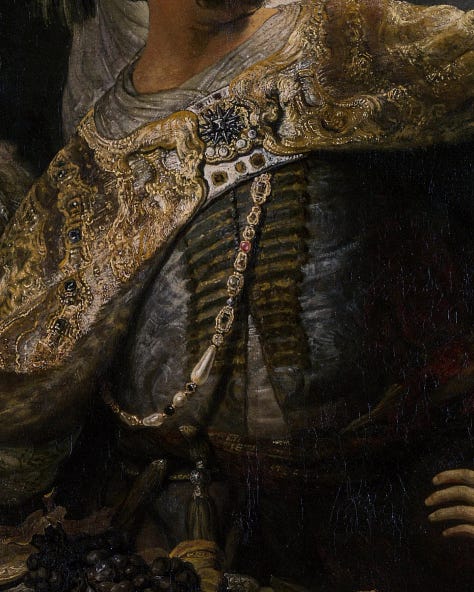
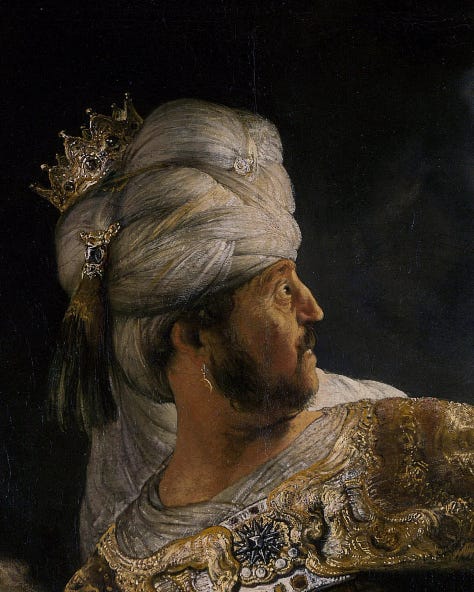
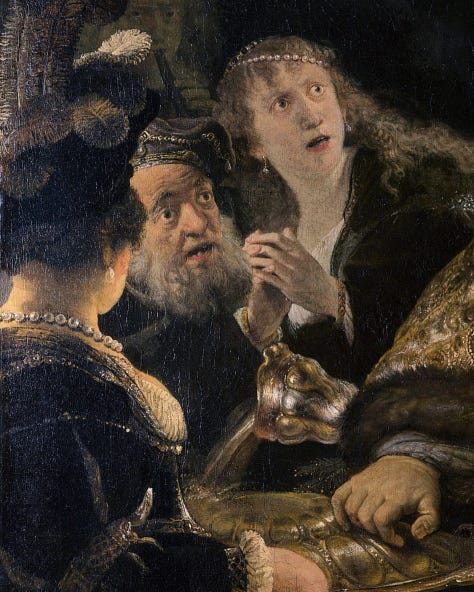
There’s movement, chaos, sheer theatrical energy spilling out of the canvas.
But let’s step back and take a look at the story behind it.
The Biblical Story Behind the Painting
The story of Belshazzar’s Feast comes straight from the Book of Daniel. The Babylonian king Nebuchadnezzar had once looted the sacred Temple of Jerusalem, stealing holy artifacts, including golden cups dedicated to God.
His son, Belshazzar, took these sacred objects and used them to throw a lavish party.
Big mistake.
At the height of the feast, a mysterious hand appeared, writing words in an unknown language on the wall:
"Mene, mene, tekel, u-farsin."
No one knew what it meant. The king’s advisors were clueless. So he sent for Daniel, a Jewish prophet.
Daniel didn’t sugarcoat it. He told the king exactly what the words meant:
Mene – Your days are numbered.
Tekel – You have been weighed and found lacking.
U-farsin – Your kingdom will be divided and given to the Medes and Persians.
That very night, Belshazzar was killed.
His kingdom? Gone.
Cultural Canvas is a reader-supported publication. Every like, comment, share, or donation helps us grow—your support truly matters!
Rembrandt’s Unconventional Inscription
Now here’s the twist. Rembrandt totally messed up the Hebrew writing.
This reminds me of Michelangelo’s Moses, another iconic artwork shaped by a translation error.
Michelangelo’s Moses, sculpted for the tomb of Pope Julius II, is famous for its striking horns, a detail that puzzled art lovers for centuries.
The reason? A mistranslation of the Hebrew word ‘karan’, which originally meant ‘rays of light’ but was misinterpreted as ‘horns’ in early Latin texts.
Just like Michelangelo’s unintended horns, Rembrandt’s inscription error adds an unexpected twist to his masterpiece.
Instead of arranging the words from right to left like proper Hebrew or Aramaic, he stacked them into columns, making them unreadable. Some historians think this was a deliberate artistic choice, reinforcing why the Babylonian wise men couldn’t decipher it. Others believe he referenced a book by his friend Menasseh ben Israel and got it wrong.
Either way, it adds another layer of mystery to the scene.
This Painting Is a Masterpiece
Beyond the misplaced letters, Rembrandt nails the psychological intensity. You can feel Belshazzar’s panic, his loss of control. And that’s exactly what made me look up the story behind this painting.
One moment, Belshazzar is untouchable. The next? His empire is crumbling in real time.
And that’s why this painting hits differently. It’s an existential crisis mid-banquet.
A king who thought he had everything. A moment where fate steps in. And an artist who turned it into a golden, illuminated, chaotic masterpiece.
See It for Yourself
📍 National Gallery in London.
Thank you for being part of Cultural Canvas! If you love what we do, consider supporting us to keep it free for everyone. Stay inspired, and see you in the next post!
Missed our last story? Read it here ↓


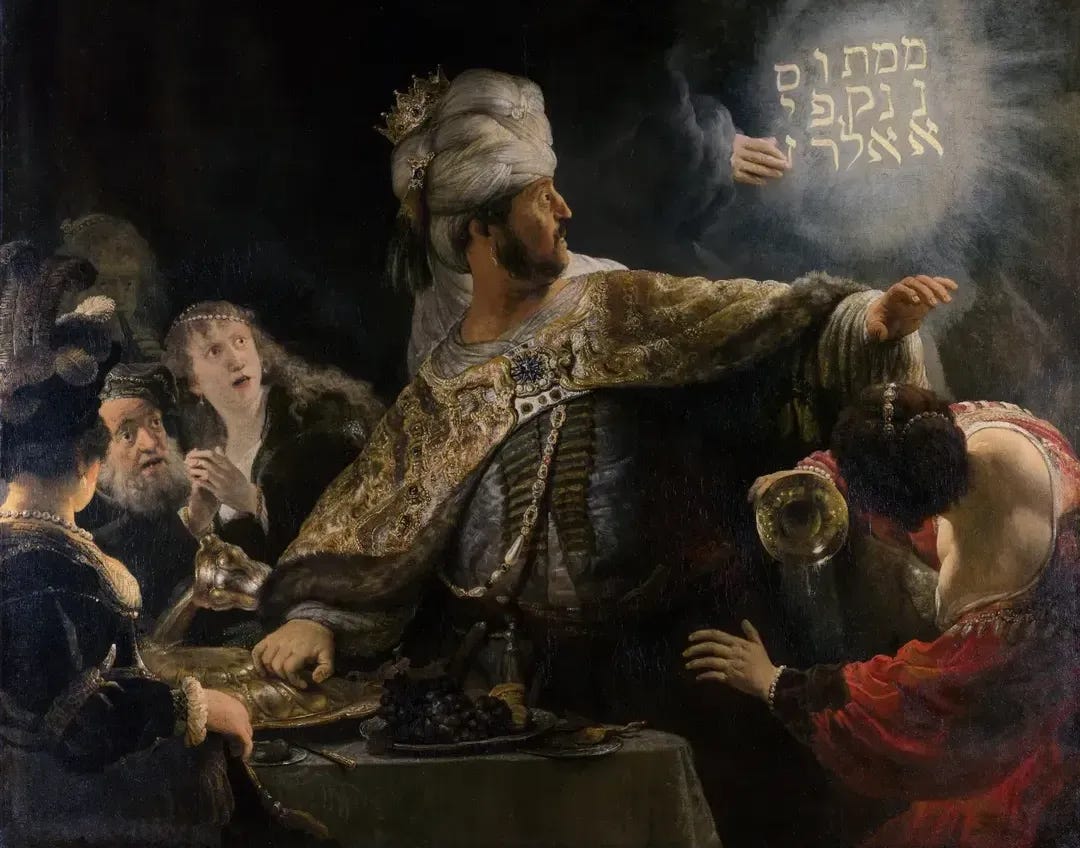
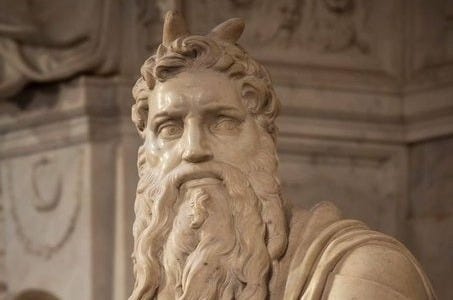

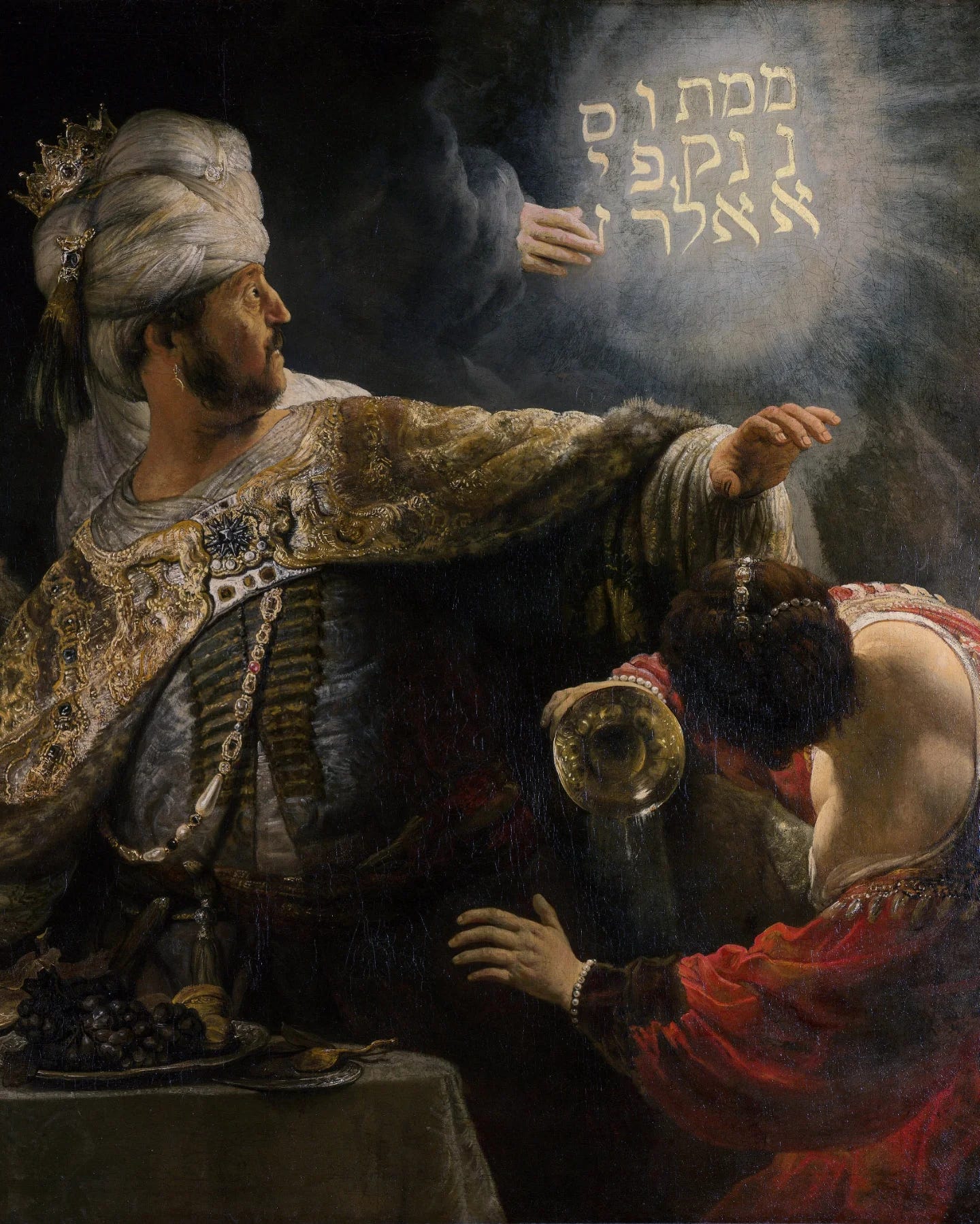

Great post! Stunning painting!! Even goes to show that even Rembrandt was human and could make an occasional mistake, ha!